Passion Flower ( Passiflora ) Seed ( Perennial )
The genus Passiflora contains over 400 species, so the common name Passion Flower can be a bit confusing. To muddle matters further, most are vines, but some are shrubs, annuls, perennials and even trees. What they all share are exotic flowers that only remain open for about 1 day. They have a wide, flat petal base with several rings of filaments in the center which surround a stalk of sorts, that holds up the ovary and stamens
Passion Flowers are also known as Passion Vine, Maypop, Granadilla and other common names.
USDA Hardiness Zones: 6 - 10, depending on species.
Exposure: Full Sun to Partial Shade. Bloom Period: Mid- to Late Summer.
Passion flowers look extremely exotic, so it's a surprise to find them growing in fields along the sides of the road. There is considerable variety between the species. Flowers: 5 or 10 petals in a flat or reflex circle. The ovary and stamens are held atop a tall, distinctive stalk which is encircled by delicate filaments. The stigmas start out high above the anthers and slowly bend backwards to come closer for pollination. Colors include: blue, purple, pink, white and red.
A lot of gardeners prefer to grow their passion flowers in containers. Passion flower grows quite happily in a pot and you have the convenience of being able to move it to a sunnier site or even bring it indoors for the winter. Plus, it limits the spreading by rhizomes.
Passion flowers should be grown in a container that is overwintered indoors in the cool temperatures of a greenhouse or in the bright light of a home with temperature around 60 F.
For containers, use a well-drained, peat/humusy potting mix. Place containers outdoors in full sun after last spring frost date.
Best flowering in full sun, but tolerates light shade. These flowering vines appreciate high humidity, but needs good air circulation to discourage fungal diseases. Water evenly and consistently during the growing season.
Vines produce flowers on new growth, so they may be pruned as needed early in the growing season. Bring vines indoors before first fall frost date. Reduce watering from fall to late winter. Passion flower may be grown as a houseplant in a sun room or in a sunny south-facing window.
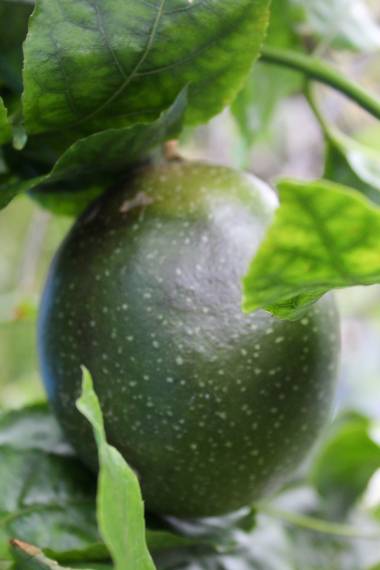
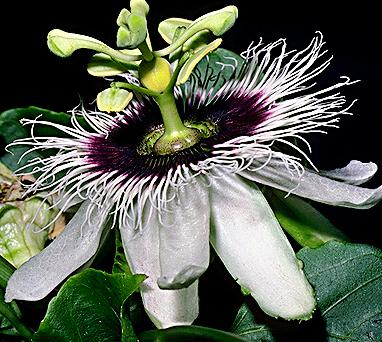
Passion fruit is widely grown throughout the tropics and subtropics. The fruit is produced on a woody vine from bisexual flowers. The fruit is somewhat tart, has a hard purple or yellow rind, and contains many black seeds. Passion fruit is commonly used in beverages. Grow on fences or trellises, or allow it to scramble over shrubs and trees. Can be grown in many zones as an annual plant if started inside in winter and moved outide in spring. Zones 9b and higer it is a perennial.
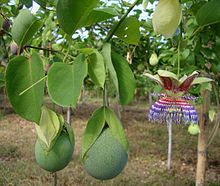
Flowers are greenish-white and purple, huge, up to 4-6 inches in diameter. The sepals are greenish-white, heavily speckled with purple spots inside, green outside. The petals are green white and heavily spotted with purple. The crown consists of four rows of filaments, white with purple stripes. The flowers are pendulous and very fragrant.
The fruits are oval or spherical, about 2 inches long and 2-3 inches wide. They are greenish yellow to light orange and the external shell is extremely hard. They are edible and taste of grapes.
The name maliformis name means "apple-shaped".
Vines are self-fertile, and should be grown on fences or trellises.
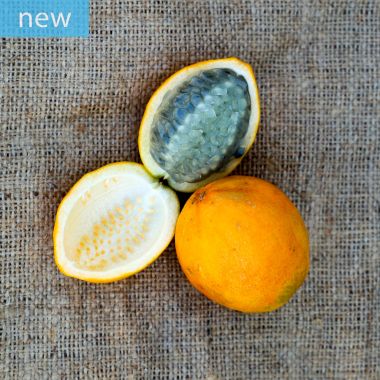
It will easily adapt to being grown in a wide range of tropical and warm temperate climates. We think the Perfect Passionfruit has the potential to become far more popular than Passiflora edulis, which is a common sight in fruit markets worldwide.
The plants do extremely well in containers and are hardy in the landscape in USDA zone 9-11.

Fruit of the giant granadilla reach a length of up to 12 inches and turn yellow when mature. The pulp around the seeds is used to flavor ice cream and to make a cooling drink. In addition, the flesh of this fruit is edible. The green fruit is boiled and eaten as a vegetable. The fully ripe flesh is eaten alone or in combination with such fruits as papaya and pineapple
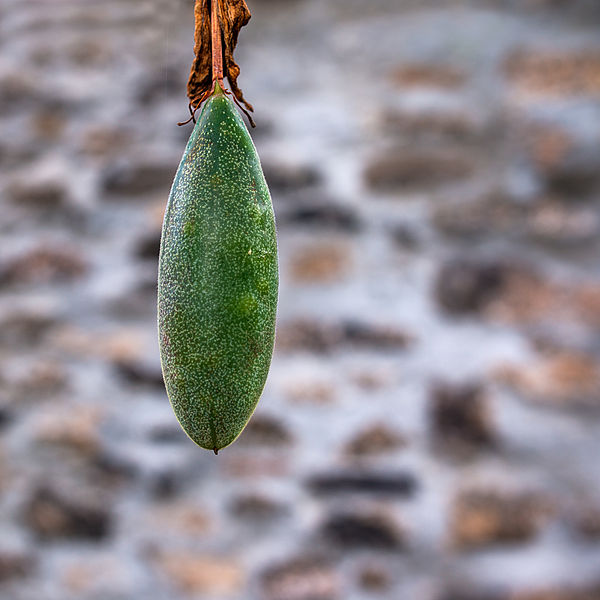
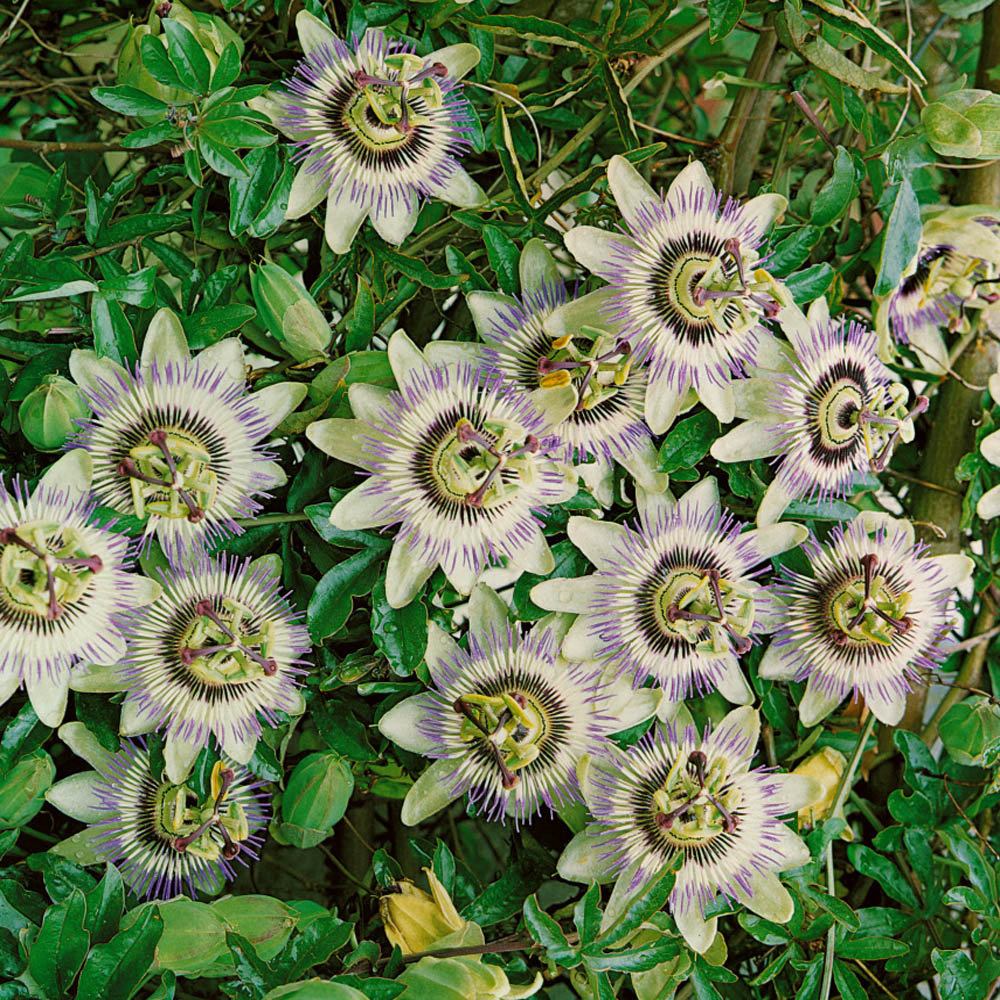
Blue passionflower likes loose sandy or gravelly soils and does best planted in old brick rubble that retains heat during cold winter weather. Too much manure or compost will result in lush vegetative growth and poor flowering. This species will flower in a small pot, but it prefers plenty of root space and will do better in a roomy container. In Zone 8-9, the ideal location is against a warm south-facing old brick wall where an overhang prevents excessive drenching by heavy rains.
Go light on fertilizer and water deeply, but infrequently; passionflowers should be encouraged to reach deep into the earth for water. When motivated to do so, they are capable of developing amazing root systems to sustain them through droughts and freezes. Passionflowers love high humidity, but they are subject to fungal diseases if they don't get good air circulation in the greenhouse. Blue passionflower does better overwintered in a cool greenhouse where it can go semi-dormant as opposed to in a hothouse where it will be tempted to put too much energy into weak off-season growth. In either case, it is important to keep the soil on the dry side in the winter.
Blue passionflower may be wound around a hoop support to keep it within bounds so that it may be grown as a houseplant in a sunny south-facing window. Passifloras flower on new growth, so they may be pruned early in the growing season. It is best to cut some stems back nearly to the base, rather than just trim the tips. The terminal buds may be pinched out to encourage branching. Always keep some green foliage on the plant to keep the sap rising and encourage rapid regrowth. The roots may be weakened and become subject to fungal infection if too much top growth is removed at once. Don't try to train a passionflower to be too neat and compact; branches allowed to hang loose and droop a bit will be the ones most inclined to flower. Passionflowers are subject to a wide array of pests and diseases, but most of them have minimal impact on well grown plants. Butterfly larvae are the exception; caterpillars readily devour the foliage of healthy mature plants.
Passionflowers like full sun and will scramble over trees and shrubs to get it.
Hardiness: USDA Zones 8 - 11. Blue passionflowers will regrow from deep roots after even severe freezes. They have been known to survive temperatures as low as 5°F (-15°C) when the ground was frozen over two feet deep! It is nevertheless important to keep the soil as warm as possible, especially in the winter greenhouse.
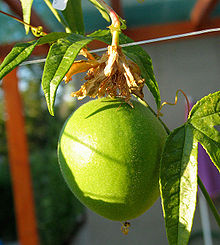
It climbs by means of clinging tendrils and can be kept as an container plant. The long tendrils need lots of support for climbing. It may be grown as a houseplant in a sunny South-facing window. It has large scented flowers, from June to November, with pale lavender petals and purple filaments which are kinked at the tip. These are followed by sweet edible fruits which are yellow when ripe. The leaves are tri-lobed and 15 cm large. Pruning is a must to keep the vine healthy. Prune off less vigorous growth and occasionally prune back vigorous growth to promote flowering.
When established, and without care, the passion fruit can easily overtake other garden plants, shading them from sun. One of the easiest Passiflora to grow and has the best cold hardiness. Keep the atmosphere humid through the Summer and place in full sun, can tolerate partial shade. You may need to water your plants on a daily basis during the hottest Summer months. During the Winter the roots should be kept moist, but as growth will be much slower you will probably only need to water once a week, depending on growing temperature. It will do best in a loam based mix with a little peat moss.
Fertilize at least once every two weeks in the growing season.
If their pot is too large or if they have an unrestricted root run then the whole plant will simply get bigger and bigger but it will refuse to flower and therefore produce the fruits. By limiting the pot size you are limiting the ability to grow and this is seen as a threat, so the natural mechanism is to produce seed for the next generation. A suitably sized pot for an adult plant would generally be of 12 inches in diameter.
Hardiness zone 8-11.
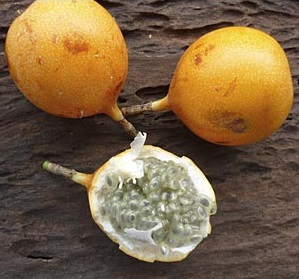
The outer shell is hard and slippery, and has soft padding on the interior to protect the seeds. The seeds, which are hard and black, are surrounded by a gelatinous sphere of transparent pulp. The pulp is the edible part of the fruit and has a soft sweet taste. It is very aromatic and contains vitamins A, C, and K, phosphorus, iron, and calcium.
Winter Hardiness: 25-30° F

